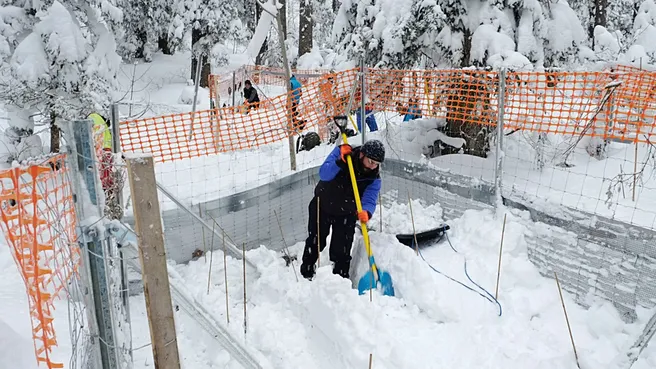Bavaria's Minister for the Environment, Thorsten Glauber, welcomes the cooperation between university research and protected areas: “The Berchtesgaden National Park is a magnificent showcase for Bavaria's nature. Scientific work has a long tradition at this unique place of learning. Exploring questions of nature conservation, ecology and climate change in the national park produces research results of international importance. Bavaria closely links national park research to the universities in the free state. This is a great success that has an impact far beyond the borders of Bavaria. Both sides benefit from the cooperation between the national park and TUM. It underlines the importance of protected areas and scientific research in equal measure. The aim is to gain the best possible understanding of nature to preserve it in the best possible way.”
In December 2019, Berchtesgaden National Park and the Technical University of Munich (TUM) officially concluded a cooperation agreement to expand and promote research in the protected area. Research management in the national park was linked to the newly established “Ecosystem Dynamics and Forest Management in Mountain Landscapes” at TUM. “The aim was and is to use synergies to analyze the long-term monitoring data obtained in the national park in the context of current research questions,” explains Professor Seidl. “Our focus is on climate impact research, for which we apply the latest scientific methods from remote sensing, simulation modeling and AI in the national park.” The team led by Prof. Seidl and co-head of research Michael Maroschek is currently working on scientific issues relating to biodiversity in the national park, forest dynamics, wildlife ecology and climate impact research. “Initial results from five years of intensive research show that the National Park's plant diversity is decreasing due to climate change, with the high altitudes being particularly affected by the loss of species.
Climate change is also speeding up forest dynamics in the national park. This means that the trees are growing faster but are also dying more frequently. The mountain forest is secure in the long term, but its composition and structure is changing considerably in some cases. Forests buffer climatic extremes, which chamoises, for example, take advantage of. They seek out the cooling effect of the forest in warm weather and are increasingly moving downhill from the rocky regions in times of climate change.”
For National Park Director Dr. Roland Baier, the cooperation he initiated with TUM is a milestone for national park research: We have established Berchtesgaden National Park as a leading hub for national and international research on ecosystem dynamics over the past five years. We are very well connected internationally and are active in networks worldwide. We implement the results of our research directly in protected area management. The cooperation thus enables us to build a bridge between excellent science and its application in practice.” Partners of the national park also benefit from this practical orientation, such as alpine farmers, with whom research is being conducted into possible adaptations of alpine farming to climate change.
The Berchtesgaden National Park offers a unique natural environment due to its topography with strong altitude and climate gradients as well as different land covers, including water, forest, open land and rock. The core zone of the protected area has been largely unaffected by humans since the national park was established in 1978. This makes the protected area around the Watzmann and Königssee particularly interesting for ecosystem research. Baier emphasizes: Only here in the national park, in areas where humans stay out, we can truly study how nature responds to changes. TUM is a leading global university of excellence, and this year received an award as the “Best University in the EU” (Times Higher Education Ranking 2024). The research collaboration between Berchtesgaden National Park and TUM is open-ended and research findings will be published on an ongoing basis.
